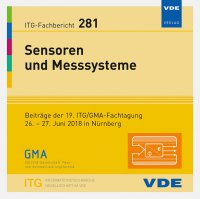Object reconstruction in non-destructive microwave defectoscopy
Conference: Sensoren und Messsysteme - 19. ITG/GMA-Fachtagung
06/26/2018 - 06/27/2018 at Nürnberg, Deutschland
Proceedings: Sensoren und Messsysteme
Pages: 4Language: englishTyp: PDF
Personal VDE Members are entitled to a 10% discount on this title
Authors:
Nesterov, Maxim; Gagelmann, Thomas; Woeckel, Sebastian (Institut f. Automation und Kommunikation, Werner-Heisenberg-Str. 1, 39106 Magdeburg, Germany)
Bendler, Matthias; Hantscher, Sebastian; Auge, Joerg (Institut f. Automation und Kommunikation, Werner-Heisenberg-Str. 1, 39106 Magdeburg, Germany & Magdeburg-Stendal University of Applied Sciences, Breitscheidstr. 2, 39114 Magdeburg, Germany)
Abstract:
Current contribution presents a new signal processing method providing an enhanced spatial image resolution and a more accurate defect classification by using low-cost microwave defectoscopy only. In order to reduce the diffraction effects, two approaches have been followed. First, several antenna configurations have been tested experimentally and optimized numerically with respect to the main emission characteristics. These include, among others, the antenna footprint, return loss, polarization and focusing characteristics of the radiated waves to detect defects in different depths in plastic materials. Secondly, the data analysis techniques are employed in the post-processing stage to suppress the diffraction effects. Within the approach, we determine the transfer function of the antenna, or so-called point spread function (PSF), which allows overcoming the diffraction limit in object reconstruction, and substantially increases sharpness and accuracy of the final image.


